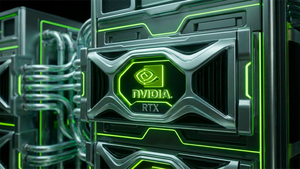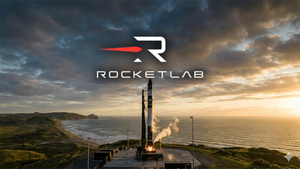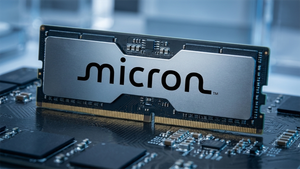
London, UK – September 29, 2025 – GMX (GMX), a leading decentralized perpetual exchange, has officially debuted its highly anticipated Multichain initiative, a groundbreaking move poised to revolutionize on-chain perpetual trading. This strategic expansion aims to unlock seamless, permissionless trading across an array of public blockchains, starting with a significant foray onto Base (BASE), Coinbase's Ethereum (ETH) Layer 2 network. The launch marks a pivotal moment for the decentralized finance (DeFi) ecosystem, promising enhanced accessibility, scalability, and a truly interoperable trading experience for users worldwide.
The immediate implications of GMX Multichain are profound. By abstracting away the complexities of cross-chain bridging and network dependencies, GMX is addressing a critical bottleneck in DeFi, making sophisticated perpetual trading more accessible than ever before. This initiative is expected to dramatically expand GMX's total addressable market, drawing in a wider user base from diverse blockchain ecosystems and setting a new standard for decentralized trading infrastructure.
A New Era of Interoperable Trading Dawns
GMX Multichain is powered by an intricate architecture designed for maximum efficiency and user experience. At its core, the system leverages LayerZero (LZRO), an industry-leading interoperability protocol, to facilitate seamless communication and transaction execution across disparate blockchain networks. This integration is crucial, allowing GMX to extend its robust trading infrastructure, which includes over 90 perpetuals and 23 high-liquidity swap markets, directly to other Ethereum Virtual Machine (EVM) compatible blockchains.
The launch on September 29, 2025, with Base as its initial expansion target, is strategically significant. GMX has historically established its strong presence on Arbitrum One (ARB) since 2021, later expanding to Avalanche (AVAX) and Solana (SOL). The move to Base immediately opens GMX to over 1.3 million Base users, significantly broadening its reach and solidifying its position as a dominant force in the perpetual DEX landscape. A key innovation, GMX Express, further enhances the user journey by abstracting network costs and Remote Procedure Call (RPC) dependencies, promising trade execution in under one second across chains. Users can now onboard and begin trading in less than 30 seconds, bypassing manual bridging or complex setups, by simply connecting a wallet, depositing collateral, and initiating a trade. This unified liquidity model, underpinned by LayerZero's battle-tested infrastructure, ensures a consistent and efficient trading environment regardless of the underlying blockchain.
Shifting Tides: Winners and Challengers in the DeFi Arena
The introduction of GMX Multichain is set to redraw the competitive landscape within the decentralized finance sector, creating clear winners and posing significant challenges for others.
GMX (GMX) itself stands as the most immediate and apparent winner. The Multichain expansion dramatically increases its market reach, user base, and potential for trading volume, solidifying its leadership in the perpetual DEX space. The enhanced user experience and reduced friction are likely to attract significant capital and activity to the platform. LayerZero (LZRO), as the foundational interoperability layer, also emerges as a key beneficiary. Increased adoption and usage of GMX Multichain will drive more transactions through LayerZero's protocol, reinforcing its critical role in the multichain future. Furthermore, Base (BASE), as the initial expansion network, stands to gain substantial traction and liquidity from GMX's presence, boosting its ecosystem activity and user engagement. Other blockchain networks slated for future integration, such as Binance Chain (BNB), Berachain (BERA), Ethereum Mainnet (ETH), Sonic, Linea (LINEA), and ApeChain (APECHAIN), will also benefit as GMX expands its footprint. Ultimately, DeFi users broadly win through improved access, lower costs, and a more seamless trading experience.
Conversely, perpetual DEXs that lag in developing robust cross-chain capabilities may face significant pressure. Competitors like dYdX (DYDX), Synthetix (SNX), and Kwenta (KWENTA) will need to innovate rapidly to match GMX's newfound interoperability, or risk losing market share to a more accessible and fluid platform. Centralized exchanges (CEXs) may also feel the pinch as GMX continues to erode their competitive advantages by offering a decentralized, non-custodial alternative with comparable or superior user experience in certain aspects. The increased efficiency and unified liquidity offered by GMX Multichain further strengthen the argument for decentralized trading over centralized models.
A Landmark in DeFi's Evolution Towards Interoperability
GMX Multichain's debut is more than just a product launch; it signifies a major milestone in the broader evolution of the DeFi industry. This event squarely aligns with the overarching trend towards a multichain future, where interoperability is not just a feature but a fundamental requirement for growth and sustainability. By seamlessly connecting disparate blockchain ecosystems, GMX is contributing to the vision of a truly global and interconnected financial system, free from the silos that have historically characterized blockchain development.
The ripple effects of this launch are expected to be far-reaching. It will undoubtedly put pressure on competitors to accelerate their own cross-chain strategies, fostering a new wave of innovation in decentralized exchange technology. We may see the emergence of novel DeFi products and services that leverage GMX's multichain infrastructure, creating new opportunities for capital efficiency and yield generation across various networks. From a regulatory perspective, GMX's continued commitment to a permissionless, non-custodial model, while expanding its reach, highlights the resilience and inherent transparency of decentralized systems. This could potentially influence ongoing discussions around digital asset regulation, showcasing the benefits of truly decentralized financial infrastructure. Historically, this move can be compared to early cross-chain bridge innovations or major protocol expansions (like Uniswap's (UNI) deployment on multiple chains), but GMX's integrated trading experience across chains via LayerZero sets a new precedent for perpetuals.
The Road Ahead: Opportunities and Challenges
Looking ahead, GMX Multichain opens up a plethora of short-term and long-term possibilities for the DeFi ecosystem. In the immediate future, users can anticipate the rapid expansion of GMX's Multichain access to other prominent networks, including Binance Chain, Berachain, Ethereum Mainnet, Sonic, Linea, and ApeChain. This will further cement GMX's position as the go-to permissionless perpetual exchange across the decentralized landscape. Furthermore, the introduction of liquidity provision opportunities, allowing users from Base and other EVM chains to earn yield, is a crucial development that will deepen liquidity and incentivize participation across the multichain ecosystem.
From a strategic standpoint, other decentralized protocols and even some centralized entities may be compelled to pivot their strategies, investing more heavily in interoperability solutions to remain competitive. The market opportunities arising from increased capital efficiency and a broader user base are immense, potentially unlocking trillions in dormant value across various blockchains. However, challenges also loom. The complexity of cross-chain interactions, while abstracted from the user, introduces new vectors for potential security risks, requiring continuous vigilance and auditing. Ensuring robust security for such an interconnected system will be paramount. Moreover, the increased liquidity and ease of access could attract more sophisticated traders and institutional capital, demanding even greater reliability and performance from the underlying infrastructure.
A Paradigm Shift for Decentralized Trading
GMX Multichain's debut represents a paradigm shift in decentralized perpetual trading, offering a compelling vision for a truly interoperable DeFi future. The key takeaways are clear: enhanced accessibility, unprecedented scalability, and a unified trading experience across diverse blockchain networks. This move firmly establishes GMX as a frontrunner in the race to build the next generation of decentralized financial infrastructure.
Moving forward, the market will be closely watching how GMX executes its expansion plans and how competitors respond to this significant development. Investors should pay close attention to the growth in trading volumes, user acquisition metrics across new chains, and the successful implementation of liquidity provision features. The lasting impact of GMX Multichain could be a fundamental re-architecture of how decentralized exchanges operate, pushing the entire industry towards greater interoperability and user-centric design. This development is not just about GMX; it's about the continued maturation and global integration of the entire DeFi ecosystem.
This content is intended for informational purposes only and is not financial advice.

















